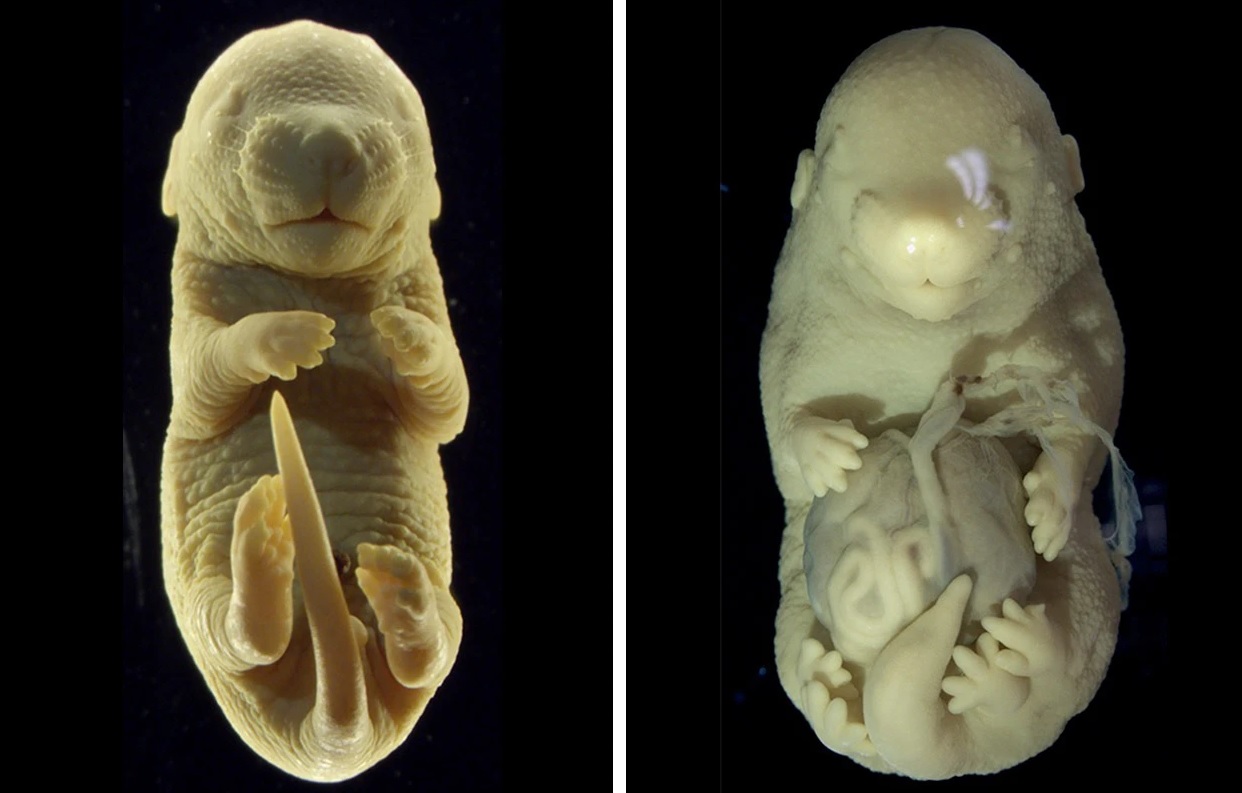Scientists Develop a Six-Legged Mouse Embryo in Lab

Science News ,World :- In a groundbreaking study published in Nature Communications on March 20th, researchers unveiled a remarkable discovery: a mouse with six legs, challenging conventional understanding of embryonic development. Led by developmental biologist Moisés Mallo and his team at the Gulbenkian Science Institute in Portugal, this study sheds light on the intricate relationship between genetics and embryonic structure.
The investigation centered around the Tgfbr1 gene, a crucial component in a signaling pathway pivotal for embryonic development. To explore its role, scientists deactivated the Tgfbr1 gene in mouse embryos midway through development. What they observed was unexpected and extraordinary.
Anastasiia Lozovska, a graduate student working with Mallo, stumbled upon a startling revelation during the research process. She noticed that some of the bioengineered embryos exhibited genitalia resembling two additional hind limbs. This serendipitous finding redirected the trajectory of their study, captivating the scientific community with its implications.
Traditionally, scientists have understood that in most quadrupeds, the development of both external genitalia and hind limbs originates from the same foundational structures. However, the six-legged mouse challenged this paradigm, offering new insights into the intricacies of embryonic development.
Further investigation into this phenomenon revealed that Tgfbr1 plays a pivotal role in determining whether these primordial structures develop into genitalia or limbs. By altering the folding patterns of DNA within the cells, Tgfbr1 orchestrates the differentiation process. When the protein is deactivated, it disrupts the activity of other genes, leading to the formation of extra limbs at the expense of traditional external genitalia.
The implications of this study extend far beyond the realm of developmental biology. Mallo and his team are now exploring whether Tgfbr1 and its counterparts exert similar effects on DNA structure in other biological systems. Specifically, they aim to unravel its potential role in conditions such as metastatic cancer and immune function.
Moreover, the researchers are delving into whether this mechanism underlies the development of unique structures in other species, such as the reptilian hemipenis. In snakes, the hemipenis, a double organ, develops from primordial structures akin to limbs, providing intriguing parallels to the findings in the six-legged mouse.
This groundbreaking research not only challenges existing paradigms in developmental biology but also opens new avenues for understanding the intricate interplay between genetics and embryonic development. By unraveling the mechanisms governing these processes, scientists are poised to make significant strides in fields ranging from cancer research to evolutionary biology. The six-legged mouse serves as a captivating example of how serendipitous discoveries can illuminate the mysteries of life's most fundamental processes.


